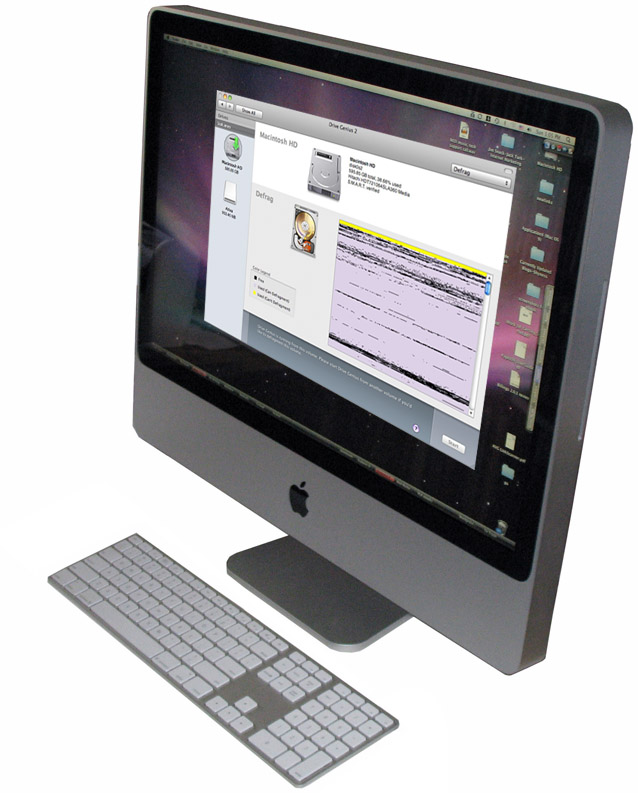
Mac users are not plagued by computer slowdowns to the same degree as Windows users are, who, Over time, may be troubled by computer performance that declines markedly. Some Windows users even buy new machines due to software based slowdowns. At the same time, they need to worry about cleaning their registry from time to time, as this can fill with corruptions.
This is not to say, however, that Mac users are immune to the problems of computer slowdowns and other glitches. They may also put up with machines that run slower than they need to. If your Mac is not running at its optimum capacity, consider these seven quick fixes to improve its performance.
1. Try the little things first. Some seemingly minor things can add up to slow down your Mac’s performance. If your Mac’s desktop has too many icons on it, this can gobble up an unnecessary amount of memory, since the system treats each desktop icon as it were an open window. File most of them away elsewhere.
2. Restart your Mac from time to time. Some Mac users brag about how long they keep their Mac running without restarting, but this is an example of false pride. The Mac, even with such niceties as protected memory and preemptive multitasking, is still subject to the laws of physics, and memory can get fragmented over time. If you see too much of the SBBOD (spinning beach ball of death) it may be time to restart.
3. Defragment your hard drive. There is some debate over how much this helps, but some people swear by it. Although the details are rather technical, defragmenting merely arranges the data on your hard drive in a more efficient manner.
You can use a utility like Drive Genius from Prosoft engineering to do this. However, make sure you have two things in place before you do so: a fresh backup to keep your data safe in the event of a power outage or other serious failure, and plenty of time, because the process takes a while. In fact, you might want to allow your Mac to do this overnight, or at least when you won’t be needing it for a few hours.
4. Free up space on your hard drive. This is another quick and easy fix. For best performance, your hard drive should have at least 20% free space.
You start by deleting space-hogging support folders for applications you never use such as the one for GarageBand, which contains nearly 5 GB of audio. If you are never likely to use iDVD, you can throw that out as well.
You can also do a simple search for files over, say, 1 GB. Just press command-F in the Finder, choose Size from the “Kind” pop-up menu, and set the adjacent popups appropriately. Remember you don’t have to permanently delete anything; you can always burn it to DVDs.
5. Upgrade your memory. Your Mac’s memory is it’s temporary workspace that it uses for everything it does. If it’s too limited, it’s like working on a desk that’s too tiny to hold everything you need to do. You will have to keep shuffling papers aside in order to make more room. Since software continues to demand more memory all the time, it’s not a bad idea to max out your memory, at least before considering buying a new Mac.
6. Clean even more stuff off of your hard drive. Your hard drive acts as an adjunct to your Mac’s RAM and often shuffles data back and forth between the two. Therefore, having enough free space is important. This is especially important if you use programs that make use of a lot of virtual memory such as Photoshop. In addition to the free tips given above, you can try a program like Spring Cleaning by Smith Micro or Mac Keeper by ZeoBit.
7. If all else fails, do a clean reinstall of OS X. After all, your Mac crashes sometimes (albeit on rare occasions). More frequent, however, are power outages, which abruptly shut your Mac down before it has a chance to do its necessary housekeeping. These incidents can eventually cause corruption of the system files.
The best way to make sure you eliminate these corruptions completely is by doing a clean reinstall of the system software. You will need to adjust your Internet settings, reset your preferences and reinstall any third party system enhancements after doing so, but it could be worth it. Check your Mac help under the Help menu for in-depth instructions.
Most of these suggestions are absolutely free to implement, while the others are relatively inexpensive. If your Mac is not running as speedily as you might like, give these tips a try before shelling out big bucks to buy a new one. Your pocketbook will thank you!
